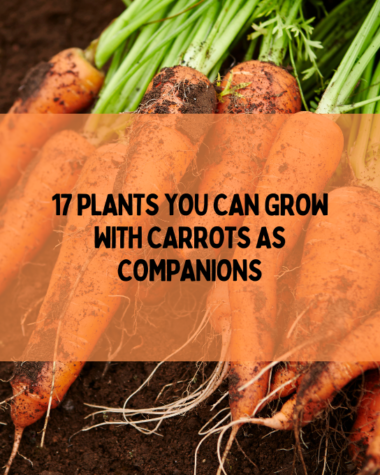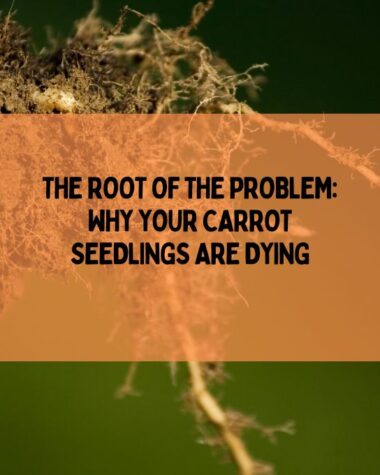Carrot Disease Management: carrots’ most common diseases, including fungal, bacterial, viral, and nematode, affect carrots. Preventing Carrot diseases is essential for a healthy harvest.
Carrots are a popular and essential vegetable crop that is consumed around the world. However, carrots are susceptible to diseases that can cause significant damage and reduce yield like any other crop. This makes proper carrot disease management crucial for farmers and gardeners who want to grow healthy and productive carrot plants.
In this article, I will provide a comprehensive guide to understanding and preventing carrot diseases.
I will discuss carrots’ most common diseases, including fungal, bacterial, viral, and nematode diseases that affect carrots, and provide information on their symptoms, causes, prevention, and treatment.
I will also discuss integrated disease management strategies that can be used to prevent and manage multiple diseases of carrots at once.
Fungal Diseases

Fungal diseases are a common problem in carrot production. It can significantly reduce yield and quality if left untreated. This section will discuss the most common fungal diseases that affect carrots, their symptoms, causes, prevention, and treatment.
Powdery Mildew
- Symptoms: Powdery mildew appears as a white or gray powdery coating on carrot plants’ leaves, stems, and flowers. Infected leaves may also become distorted or yellowed, and the overall growth of the plant may be stunted.
- Causes: Powdery mildew is caused by the fungus Erysiphe polygoni and thrives in warm, dry conditions. It can spread rapidly in crowded plantings or areas with poor air circulation.
- Prevention: To prevent powdery mildew, plant carrots in areas with good air circulation and avoid overcrowding. Water plants at the base to avoid wetting the leaves. Regularly remove any infected plant material and destroy it.
- Treatment: Fungicides containing sulfur or potassium bicarbonate can effectively treat powdery mildew. However, reading the label and following all instructions is essential.
Leaf Blight
- Symptoms: Leaf blight appears as brown or black spots on the leaves of carrot plants. A yellow halo may spread rapidly around the spots, causing the leaves to wither and die.
- Causes: Leaf blight is caused by the fungus Alternaria dauci and is favored by warm, humid weather. It can be spread through contaminated soil, water, or infected plant material.
- Prevention: To prevent leaf blight, practice crop rotation and avoid planting carrots in areas where leaf blight has been previously detected. Use disease-free seeds and maintain good soil health by adding organic matter. The soil test is essential to ensure the excellent health of the soil.
- Treatment: Fungicides containing chlorothalonil or copper can effectively treat leaf blight. However, reading the label and following all instructions is essential.
Black Rot
- Symptoms: Black rot appears as black, sunken lesions on the roots of carrot plants. The lesions may also produce a foul odor, and infected carrot roots may become soft and mushy.
- Causes: Black rot is caused by the fungus Ceratocystis fimbriata and is favored by warm, wet conditions. It can be spread through contaminated soil, water, or infected plant material.
- Prevention: To prevent black rot, practice crop rotation and avoid planting carrots in areas where black rot has been previously detected. Use disease-free seeds and maintain good soil health by adding organic matter.
- Treatment: There are no effective treatments for black rot, so infected plants should be removed and destroyed to prevent the spread of the disease.
Related Read
- The Ultimate Guide To Cucumber Pests and Diseases
- How to Find, Prevent, and Treat Zucchini Plant Problems?
- 10 Tomato Diseases – How to Recognize, Treat, and Prevent?
Bacterial Diseases
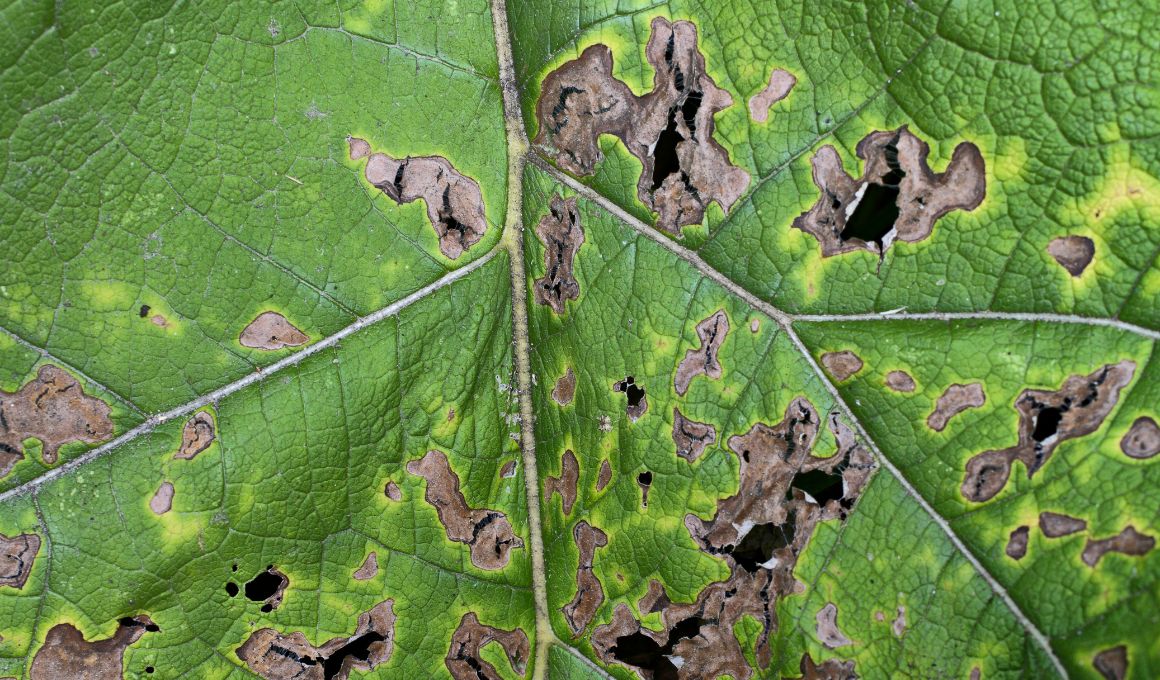
Bacterial diseases can also cause significant damage to carrot crops. Here are the three most common bacterial diseases that affect carrots:
Soft Rot
- Symptoms: Soft rot is a bacterial disease affecting the carrot plant’s roots. The symptoms of soft rot include soft, watery lesions on the roots that eventually lead to the complete decay of the carrot. The affected roots will emit a foul odor, and the foliage will wilt and turn yellow.
- Causes: Soft rot is caused by a bacterium called Erwinia carotovora, which thrives in warm and humid conditions. The bacterium can enter the carrot plant through wounds caused by insects, tools, or other means of injury.
- Prevention: Proper sanitation practices can prevent the spread of soft rot. This includes removing and destroying infected plants and avoiding working in wet conditions. Crop rotation can also help prevent the spread of the disease.
- Treatment: There is no cure for soft rot, so prevention is critical. Infected plants should be removed immediately to prevent the spread of the disease.
Bacterial Wilt
- Symptoms: Bacterial wilt affects the entire carrot plant, causing it to wilt and die. The leaves turn yellow and may have a wilted appearance, and the entire plant may eventually collapse. Bacterial ooze may also be visible on the stem.
- Causes: Bacterial wilt is caused by the bacterium Erwinia tracheiphila, which cucumber beetles transmit. The bacteria enter the plant through wounds caused by feeding insects.
- Prevention: The best prevention for bacterial wilt is to control cucumber beetles through insecticides or physical barriers such as row covers. Crop rotation can also help prevent the spread of the disease.
- Treatment: There is no cure for bacterial wilt, so prevention is critical. Infected plants should be removed immediately to prevent the spread of the disease.
Cavity Spot
- Symptoms: Cavity spot is a bacterial disease affecting the carrot plant’s roots. The symptoms of cavity spots include small, dark cavities on the roots that can eventually cause the root to crack or split. The affected roots may also have a foul odor.
- Causes: Cavity spot is caused by the bacterium Pythium sulcatum, which thrives in excellent, wet soil conditions. The bacterium can enter the plant through wounds caused by insects or tools.
- Prevention: Proper irrigation practices can help prevent the development of cavity spots. Avoid overwatering and ensure proper drainage to reduce the risk of infection. Crop rotation can also help prevent the spread of the disease.
- Treatment: There is no cure for a cavity spot, so prevention is critical. Infected plants should be removed immediately to prevent the spread of the disease.
Viral Diseases

Viruses cause viral diseases and can be a significant problem in carrot production. The symptoms of viral diseases in carrots can be varied and often challenging to identify. Here are some of the most common viral diseases that affect carrots:
Carrot Motley Dwarf
- Symptoms: Carrot motley dwarf virus causes the leaves of the carrot plant to become mottled with yellow or white spots. The leaves may also become curled and distorted. The plant’s roots may be stunted, and the carrots may be small and misshapen.
- Causes: The carrot motley dwarf virus is spread by leafhoppers, small, winged insects that feed on the sap of plants. The virus can also be spread through infected carrot seeds.
- Prevention: Preventing the spread of the virus by leafhoppers is difficult, but it can be done by using insecticides and controlling weeds, which can be insect breeding sites. Using certified virus-free seeds is also essential in preventing the spread of the virus.
- Treatment: There is no cure for the carrot motley dwarf virus, so infected plants should be removed and destroyed to prevent the spread of the virus.
Aster Yellow
- Symptoms: Aster yellow is a disease that causes yellowing and twisting of the leaves of the carrot plant. The plant’s roots may be stunted, and the carrots may be small and misshapen.
- Causes: Aster yellow disease is spread by leafhoppers, small, winged insects that feed on the sap of plants. The virus can also be spread through infected seeds.
- Prevention: Preventing the spread of the virus by leafhoppers is difficult, but it can be done by using insecticides and controlling weeds, which can be insect breeding sites. Using certified virus-free seeds is also essential in preventing the spread of the virus.
- Treatment: There is no cure for the yellow aster disease, so infected plants should be removed and destroyed to prevent the spread of the virus.
Cucumber Mosaic Virus
- Symptoms: Cucumber mosaic virus causes mottling, yellowing, and stunting of the leaves of the carrot plant. The plant’s roots may also be stunted, and the carrots may be small and misshapen.
- Causes: The cucumber mosaic virus is spread by aphids, tiny, winged insects that feed on the sap of plants. The virus can also be spread through infected seeds.
- Prevention: Preventing the spread of the virus by aphids is difficult, but it can be done by using insecticides and controlling weeds, which can be insect breeding sites. Using certified virus-free seeds is also essential in preventing the spread of the virus.
- Treatment: There is no cure for the cucumber mosaic virus, so infected plants should be removed and destroyed to prevent the spread of the virus.
Also, Read
- Preventing The Spread Of Root-Knot Nematodes To Save Carrot Crops
- The Root Of The Problem: Why Your Carrot Seedlings Are Dying
- Southern Blight: Effective Ways To Control Carrot Disease
Nematode Diseases

Nematodes are microscopic worms that live in the soil and can cause severe damage to carrot plants. Three main types of nematodes affect carrots: root-knot nematodes, sting nematodes, and lesion nematodes. Each of these nematodes has different symptoms, causes, and treatments.
Root Knot Nematodes
- Symptoms: Root-knot nematodes cause galls or knots on the roots of the carrot plant. The galls can vary in size, but they usually appear as small, swollen areas on the roots. As the infestation progresses, the galls can become larger and more numerous, causing the roots to become deformed and stunted.
- Causes: Root-knot nematodes are caused by the Meloidogyne species of nematodes. These nematodes enter the plant roots and cause the cells to enlarge and divide, forming galls.
- Prevention: To prevent root-knot nematode infestations, it is important to rotate crops regularly. Planting nematode-resistant carrot varieties can also help reduce the risk of infestation. In addition, keeping the soil moist and healthy can help deter nematodes.
- Treatment: There are no effective chemical treatments for root-knot nematodes. However, specific biological controls, such as using nematode-trapping fungi, can help reduce the nematode population. In severe cases, removing infected plants and solarizing the soil may be necessary to kill the nematodes.
Sting Nematodes
- Symptoms: Sting nematodes cause small, needle-like lesions on the roots of the carrot plant. These lesions can make the roots more susceptible to other diseases and pests. Infected plants may also show signs of stunting and yellowing.
- Causes: Sting nematodes are caused by the Belonolaimus species of nematodes. These nematodes enter the plant roots and feed on the plant tissues, causing damage and injury.
- Prevention: To prevent sting nematode infestations, it is essential to maintain healthy soil conditions. Crop rotation can also help reduce the risk of infestation.
- Treatment: There are no effective chemical treatments for sting nematodes. However, specific biological controls, such as using nematode-trapping fungi, can help reduce the nematode population. In severe cases, removing infected plants and solarizing the soil may be necessary to kill the nematodes.
Lesion Nematodes
- Symptoms: Lesion nematodes cause small, dark lesions on the roots of the carrot plant. These lesions can lead to secondary infections and make the roots more susceptible to other diseases and pests.
- Causes: Lesion nematodes are caused by the Pratylenchus species of nematodes. These nematodes enter the plant roots and feed on the plant tissues, causing damage and injury.
- Prevention: To prevent lesion nematode infestations, it is essential to maintain healthy soil conditions. Crop rotation can also help reduce the risk of infestation.
- Treatment: There are no effective chemical treatments for lesion nematodes. However, specific biological controls, such as using nematode-trapping fungi, can help reduce the nematode population. In severe cases, removing infected plants and solarizing the soil may be necessary to kill the nematodes.
Integrated Disease Management/ Preventing Carrot Diseases
Explanation of Integrated Disease Management
Integrated disease management (IDM) is a holistic approach to managing plant diseases that combine different strategies to control and prevent disease. The goal of IDM is to use a combination of techniques to reduce reliance on any one control method and achieve long-term, sustainable disease management.
IDM involves a combination of biological, cultural, and chemical methods to control the disease.
Importance of Crop Rotation
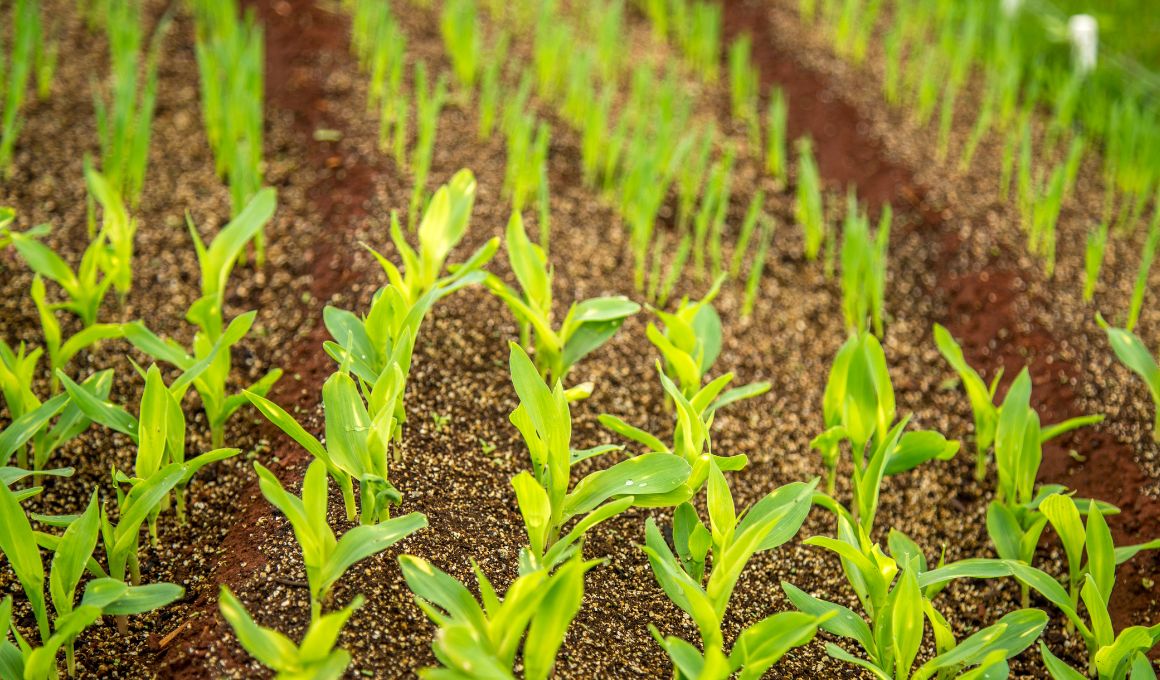
Crop rotation is an essential cultural practice in IDM that involves planting different crops in a specific sequence in a field. Crop rotation can help manage soil-borne diseases by reducing the buildup of pathogens in the soil. Crop rotation can also help improve soil fertility, reduce pest pressure, and increase crop yields.
Also, Read
- The Ultimate Guide To Recognizing And Managing Cercospora Leaf Blight In Carrots
- Can You Grow Carrots? / What Are Some Common Carrot Varieties?
- 17 Plants You Can Grow With Carrots As Companions
Soil Health Management

Soil health management is another crucial aspect of IDM. Healthy soils are better able to resist diseases and support plant growth. Soil health management involves maintaining proper soil pH, improving soil structure, and increasing soil organic matter through cover crops, compost, and other organic soil amendments.
Use of Disease-Resistant Carrot Varieties
Planting disease-resistant carrot varieties is an effective way to prevent and manage diseases. Disease-resistant varieties are developed through traditional breeding methods and are specifically bred to resist certain diseases.
When selecting carrot varieties to plant, it is essential to consider the prevalent diseases in the area and choose varieties that are resistant to those diseases.
Chemical Control
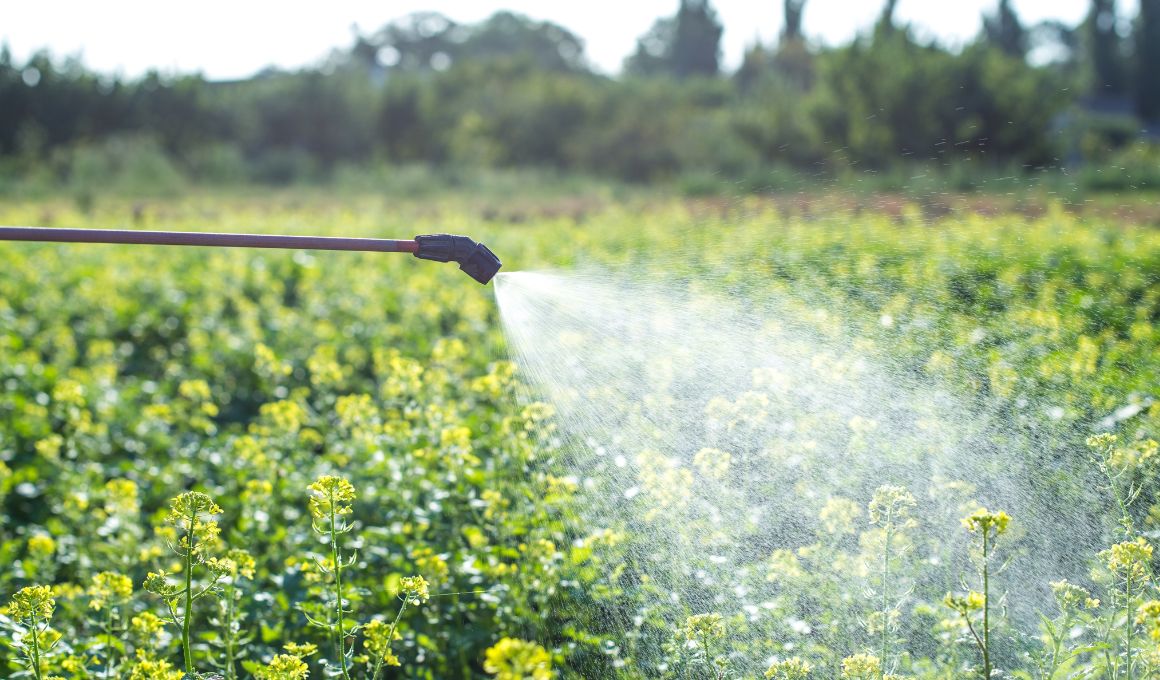
Chemical control is a method of disease management involving fungicides, bactericides, and nematicides to control plant diseases. Chemical control should be used with other IDM strategies and sparingly to reduce the risk of resistance development.
When using chemicals, following all label instructions and safety precautions is essential to ensure safe and effective use.
By combining different disease management strategies, growers can develop a comprehensive IDM plan that effectively manages plant diseases while reducing reliance on one control method.
Conclusion
In conclusion, properly managing carrot diseases is critical to ensure optimal yield and quality of carrots. Fungi, bacteria, viruses, and nematodes can cause the most common carrot diseases. Symptoms of these diseases include wilting, discoloration, and deformities in the roots and leaves of the plant.
Prevention and treatment methods vary depending on the specific disease. Still, integrated disease management practices that include crop rotation in a carrot field, soil health management, disease-resistant carrot varieties, and chemical control can help reduce the risk and severity of disease outbreaks.
Additionally, using disease-resistant varieties and commercial carrots and implementing integrated disease management practices can help minimize the impact of diseases on carrot crops.
Proper carrot disease management is crucial to ensure successful carrot production. Farmers and gardeners can proactively protect their crops and maximize their harvest carrots and quality by understanding the different types of carrot diseases and their prevention and treatment methods.
Happy Gardening!



